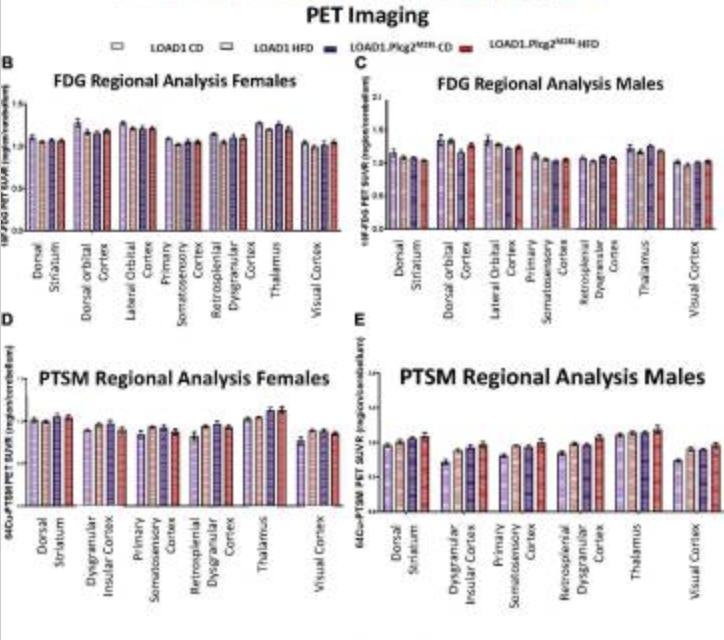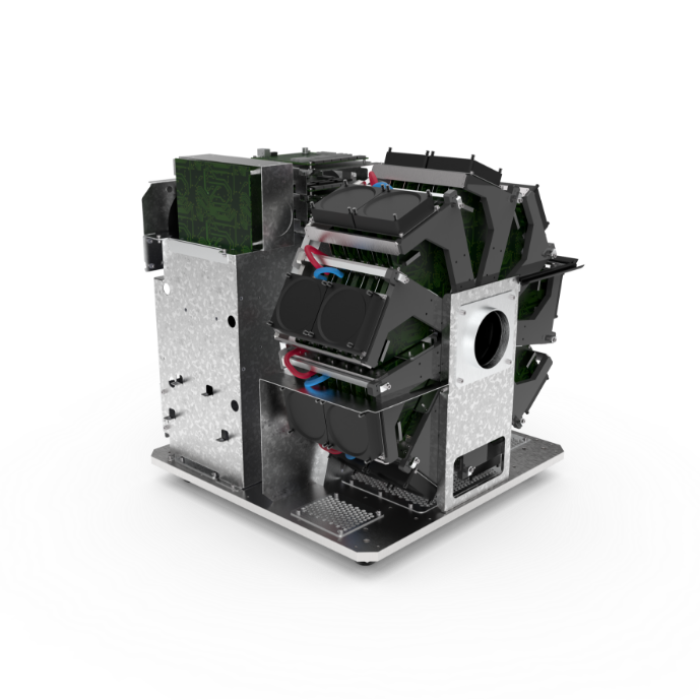Plcg2M28L interacts with high fat-high sugar diet to accelerate Alzheimer’s disease-relevant phenotypes in mice
In this study, PET-CT imaging is used to evaluate and quantify regional glycolysis and tissue perfusion, in order to detect differences between animal models with different pre-existing genetic risk factors.
Research question
Obesity is recognized as a significant risk factor for Alzheimer’s disease (AD). The majority of AD-related research have focused on the use of early-onset AD models. In this study, the impact of genetic risk factors on late-onset AD in mice with a high fat/sugar diet is evaluated.
Experiment
Three mouse models were evaluated and PET-CT imaging was done to assess regional glycolysis and tissue perfusion, by means of 64Cu-PTSM to measure blood flow and 18F-FDG to measure glycolytic metabolism. To quantify regional changes, 27 brain regions were identified (54 bilateral) after mapping the data to stereotactic mouse brain coordinates, and were analyzed to measure standard uptake value ratios (cerebellum as reference).

Results
Genotype specific differences in response to the high fat/sugar diet were observed between the 3 animal models, which indicates that further insight into this process can impact the development of lifestyle interventions for the treatment of AD.
